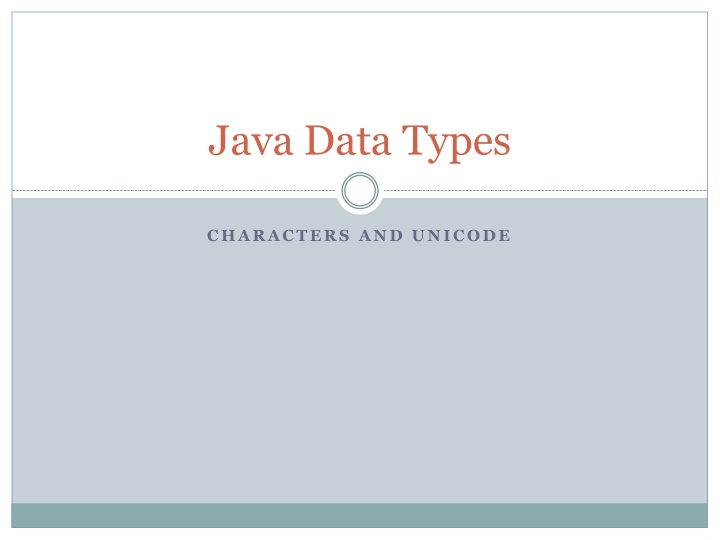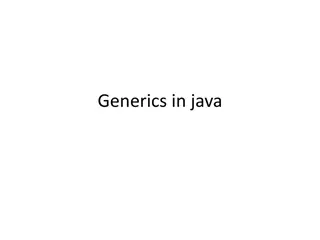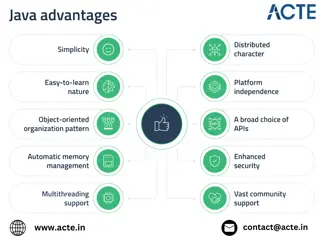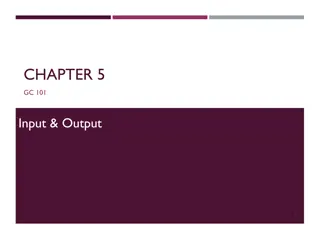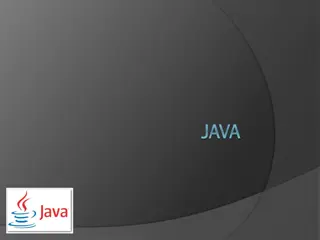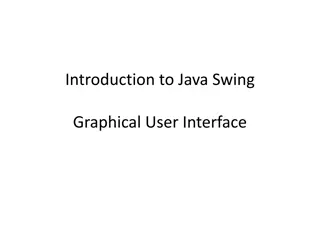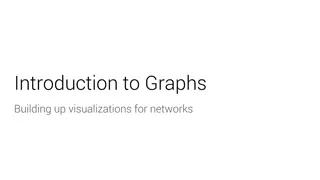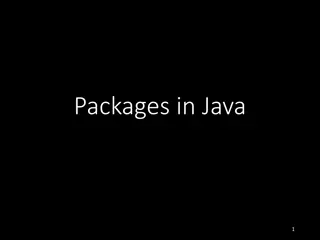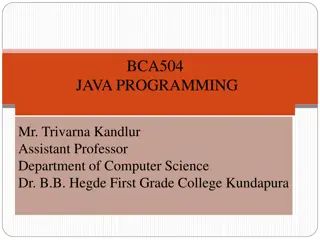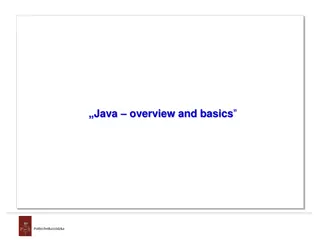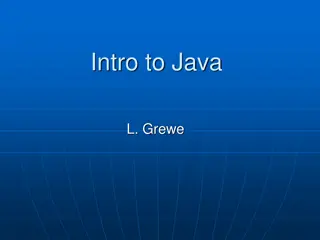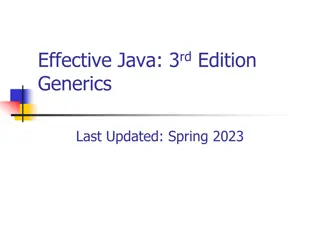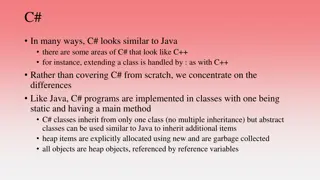Java Data Types
Unicode characters play a crucial role in Java programming, representing printable symbols and alphabets internally via numerical codes. Learn about Unicode handling, control codes, and printable character representation in this detailed overview.
Download Presentation

Please find below an Image/Link to download the presentation.
The content on the website is provided AS IS for your information and personal use only. It may not be sold, licensed, or shared on other websites without obtaining consent from the author.If you encounter any issues during the download, it is possible that the publisher has removed the file from their server.
You are allowed to download the files provided on this website for personal or commercial use, subject to the condition that they are used lawfully. All files are the property of their respective owners.
The content on the website is provided AS IS for your information and personal use only. It may not be sold, licensed, or shared on other websites without obtaining consent from the author.
E N D
Presentation Transcript
Java Data Types CHARACTERS AND UNICODE
Unicode Characters, like the letters of the alphabet and other printable symbols, are represented internally in the computer by a numerical code. The coding system that Java relies on for characters is called Unicode. Unicode assigns an integer value to each separate printable character. Unicode is based in part on a previous coding system known as ASCII.
Unicode Though Unicode handles thousands of characters, this will only cover the first 128 codes. English alphabet Keyboard symbols Codes that don t represent printable characters
Control codes The first 32 codes are non-printable control codes. They are referred to as control codes because they originated as instructions for communicating with or controlling a device. Most of these codes are of no use to the programmer. But there are some, such as the line feed and carriage return codes, which may be useful for printed output.
Control codes System.out.print( \n ); The escape sequence \n causes the pair of control codes, line feed and carriage return, to be generated. Similarly, \t causes a horizontal tab to be generated. Although not literally printable, these characters can affect the appearance of the output.
Control codes Code Name Description Code Name Description 0 NUL Null 16 DLE Data link escape 1 SOH Start of Heading 17 DC1 Device control 1 2 STX Start of text 18 DC2 Device control 2 3 ETX End of text 19 DC3 Device control 3 4 EOT End of transmission 20 DC4 Device control 4 5 ENQ Enquiry 21 NAK Negative acknowledge 6 ACK Acknowledge 22 SYN Synchronous idle 7 BEL Bell 23 ETB End of transm. Block 8 BS Backspace 24 CAN Cancel 9 HT Horizontal tab 25 EM End of medium 10 LF Line feed 26 SUB Substitute 11 VT Vertical tab 27 ESC Escape 12 FF Form feed 28 FS File separator 13 CR Carriage return 29 GS Group separator 14 SO Shift out 30 RS Record separator 15 SI Shift in 31 US Unit separator
Unicode characters The Unicode values from 32 to 127 are printable, except for code 127, which stands for deletion. The letters of the alphabet, small and capital, and the various punctuation marks are arranged as they are for historical reasons. The sort order for characters or text items is based on their Unicode values.
New data type: char We can now consider the character type, char. char is effectively an integer type. It is possible to cast between something typed char and something typed int. The underlying value is always an integer. The type (int or char) determines whether the integer value or the associated Unicode character is displayed. The following program illustrates the idea that an integer can be cast to a character and printed out as such.
Char public class UnicodeChars { public static void main(String[] args) { char myChar; int i; i = 65; myChar = (char) i; System.out.println(myChar); } } //Prints A
Char In this program, the char type takes the integer value of 65, and finds the character associated with it, capital letter A. It isn t always necessary to use a number to assign a value to a char type. You can directly set the character you want. myChar = A ; Note that we use single quotes instead of double quotes to denote a single character value. Double quotes signify a string, while single quotes signify a character.
Finding the integer value of a char It is also possible to find the integer value of a char type, by casting it to an int, as shown below: Char myChar = A ; int i = (int) myChar; System.out.println(i); //Prints 65
Lab Prepare yourselves! You are now ready for questions 39 to 42 on the assignment sheet. The first couple of questions consists of determining a character from an integer, and an integer from a character. The last couple will involve taking an integer/char type, and turning it into the other type.
